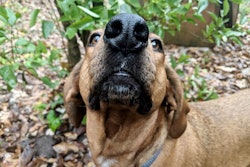
The United States pet food industry continues growing atop the pandemic-fueled surge in pet ownership and premiumization, but some industry analysts warned that the good news may hide weaknesses in the dog, cat and other pet food markets. In “Pet Industry Overview – Spring 2022,” analysts with Cascadia Capital noted the impressive growth of the pet food industry through the lingering pandemic. However, they observed how the influence of the disease on society may have distorted the market, making long-term prediction complicated.
Overall consumer spending recovered for the pet food industry in 2021, but a scarcity of suitable comparisons may distort the meaning of the growth percentages. Along with that, pet food and treat market performance data form 2021 was boosted by new pet acquisitions that had yet to annualize or reach a point where data could go from allowing short-term versus long-term calculations. Those new pandemic pets and increased premium pet food purchases, especially among wealthier Americans, served as a bulwark against financial caution and concern among lower-income groups in early 2022. Those monetary worries may be less focused on the pandemic’s immediate effects now though.
Pandemic and pet owner financial fear
Pandemic-related economic concerns seem to be fading among U.S. pet owners, while other concerns surface. Compared to Gen X and baby boomers, younger pet owners worry more that they may need to spend less on pet food and treats in 2022 or change to a cheaper brand. In a November 2021 survey by the American Pet Products Association (APPA), distinct generational differences arose related to economic issues. Since early in the pandemic, APPA has surveyed U.S. pet owners about how COVID-19 influenced pet ownership. The percentage of millennials and Gen Z that are concerned how finances will affect their pet expenditures rose in the last survey.
Age-related differences remained, but APPA analysts found in a February 2022 survey that pet owners’ financial fears had returned to levels last seen in late 2020. Even among younger pet owners, monetary worries influenced pet food purchasing decisions less than during the onset of the pandemic or the omicron surge. Of the 2,052 pet owners in the survey, some even reported that they can find preferred brands in stores. However, economic concerns still hovered over approximately half of survey respondents. APPA shared these survey results in volume six of its “COVID-19 Pulse Study: Pet Ownership During the Pandemic.” As the pandemic becomes endemic, pet owners transition into another new normal of inflation and war.
While inflation in pet food prices seems reasonable compared to other products, Cascadia analysts detailed how the cumulative effect of inflation during the pandemic may be a concern. While pet category inflation was 4.1% in 2021, the rate hit 9.5% over the 24-month period ended February 2022. Commodity price increases in the last half of 2021 were passed on to consumers, resulting in a pet food price inflation spike in February 2022.
While overall pet food industry growth remains strong in 2022, Cascadia Capital analysts noted rising problems with inflation, commodity costs and pet owner’s economic concerns not directly related to the pandemic.

















